Hill climbing can be an incredibly exciting and satisfying part of cycling, whether you are conquering the curves of Alpe d’Huez or mastering your nearby slopes. However, it can also be a very disheartening experience when you can’t make it up a hill or when other riders ride past you or drop you on climbs, all while making it look easy. Hill climbing can be a test of physical and mental strength, and it can be difficult to know where to start when you want to improve your speed on hills. But you don’t have to dedicate yourself to long, strenuous training sessions to improve your hill climbing. Unlocking the secrets of cycling up hills faster doesn’t have to be complicated. We’ve put together seven tips and training sessions to help you get to the top faster than your competitors. With the right approach, you can become an expert hill climber in no time. From improving your climbing technique to building your strength and endurance, we’ll cover it all. So don’t wait. Get started now and unlock the secrets of cycling up hills faster.
Choose the right gear ratios
The first step to cycling up hills faster is to make sure you have the right gear ratios. This means finding the right gear combination that will give you the most power and speed to get to the top. Depending on the type of hill you are climbing, you may need a different gear ratio. For example, if you are climbing a steep hill, you’ll need a lower gear ratio (easier gear) to help you get up the hill. On the other hand, if you are climbing a more gradual hill, you may need a higher gear ratio (harder gear) to keep your cadence high and your speed up.
Another important factor to consider is the length of the hill. For shorter steep hills, you may want to opt for a slightly higher gear ratio (a gear or two harder than you would use when staying seated on climbs), so you can stand. This is because you can generate more power when standing than staying seated. Conversely, for longer hills, you may want to opt for a lower gear ratio (easier gear) to help you maintain a consistent speed so that you can stay seated for most of the climb. Staying seated on climbs is more efficient on longer climbs than standing.
Cadence also plays a role in climbing efficiency. You should experiment with different gear ratios to determine which hill climbing cadence works best for you. Some riders find that selecting a gear that keeps their cadence around 70 rpm provides the most efficient and fastest hill climbing experience, whereas other stronger, heavier rides may find 60 rpm better. In comparison, lighter riders with less power may find cadences as high as 90 rpm more suitable. Regardless of your body composition, you’ll want to do workouts that develop your ability to ride at a higher average cadence on climbs. This is because it’s more efficient to ride up climbs at higher cadences for the same reason that lifting a lighter weight for more reps in a gym produces less muscle fatigue than a heavy weight at lower reps.
If you do a lot of hill climbing or ride up steeper climbs, then I highly recommend that you get your bike fitted with a compact crankset and an 11-32 or 11-34 rear cassette. Compact cranks feature 50 and 34 tooth rings (50/34). Compact cranks will give you lower gear ratios (easier gear) than standard (53/39) or semi-compact (52/56) cranks. And the 11-32 or 11-34 rear cassette extends your lower gears even further. Lower gearing enables you to keep your cadence higher on longer climbs which reduces muscle fatigue for the same reason I mentioned above with the gym example. For shorter or steeper climbs, you can trade off a higher cadence and less fatigue with a lower cadence to produce more power because the duration of the effort on the climb is less. Also, lower gear ratios allow you to keep your cadence high enough so that you don’t end up stalling your bike on steeper gradient climbs.
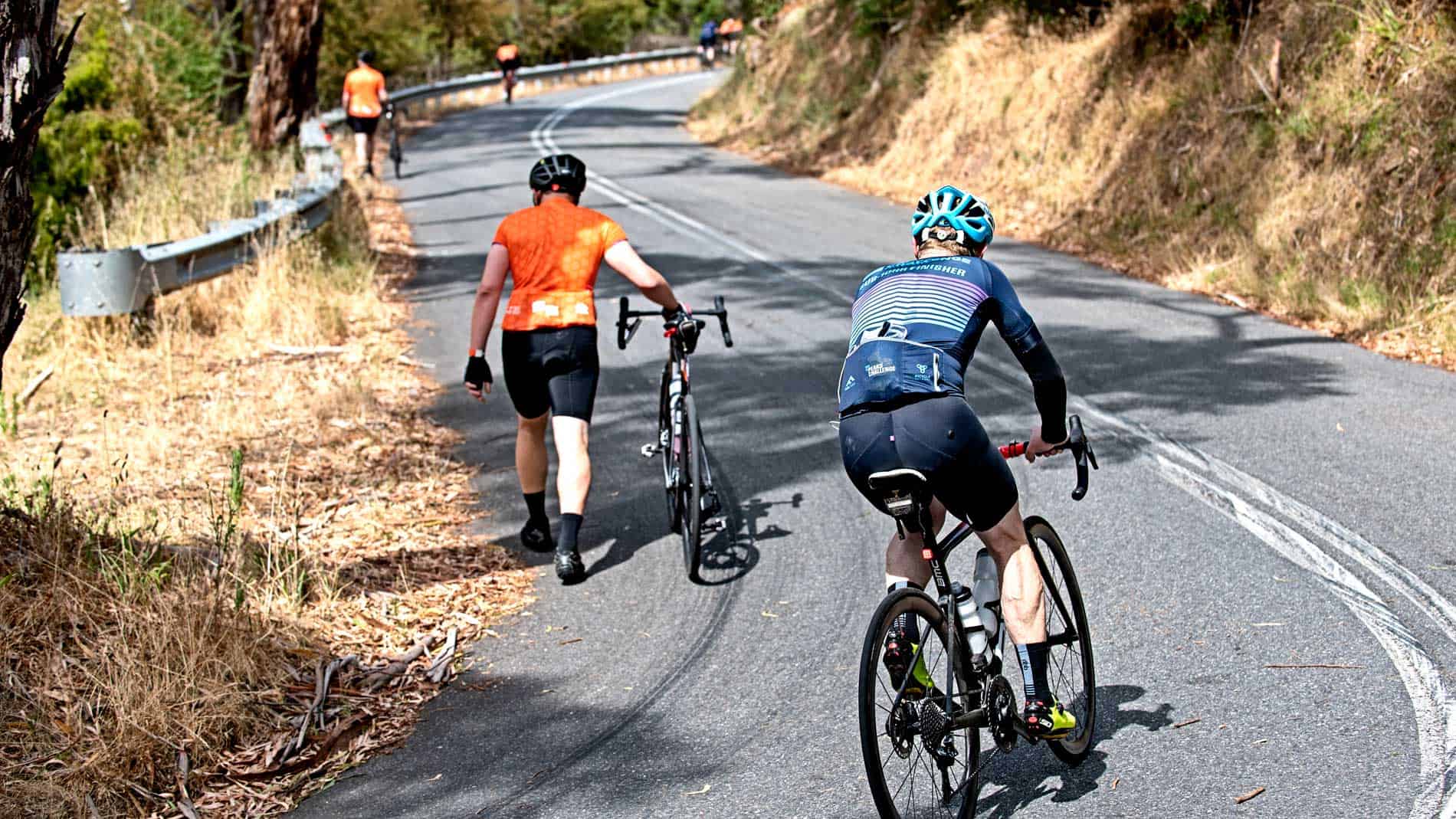
Getting dropped on climbs is no fun, and walking is even worse. But having the right gearing for your fitness and the gradients you’ll be climbing is one of the first things to consider. With the right gearing, you’ll have a much better chance of saving your legs and getting up the steepest of gradients with relative ease. This along with the other tips presented in this article, will help you become a much better climber.
Improve Your Climbing Technique – Both Seated and Standing
Once you have the right gear ratios sorted out, the next step is to focus on your climbing technique. This is an important factor when it comes to cycling up hills faster. There are two main techniques you can use when climbing hills: seated and standing.
Shorter climbs tend to require more power and speed and more time standing, while longer climbs require more endurance and a steady pace and more time staying seated.
Seated Climbing
When climbing hills in a seated position, you should focus on driving the pedals with your legs in a circular motion. Focusing on dragging across the top of the stroke (from the eleven o’clock to the one o’clock position) and through the bottom of the stroke (from the five o’clock to the seven o’clock position). When doing this, keep your core locked and your upper body relaxed. You’ll want to practice this ability to drive from your hips using highly stabilised power. This will help to increase your pedalling efficiency by up to 66%, which will help you produce more power for longer with less fatigue. When seated, the back part of the stroke, where you return to the eleven o’clock position of the pedal stroke, is a rest cycle.
To develop this core strength and pedalling technique for hill climbing, you can do specific cycling workouts. These workouts, when combined with cycling specific off-the-bike functional strength exercises, help you to master this and dramatically improve your pedalling efficiency and the power that you can deliver into the bike on climbs.
Standing Climbing
When climbing hills in a standing position, you should focus on using your core and arms to stabilise your power while driving straight down into the bike. This will help to increase your power and speed. Additionally, you should keep your body centred over the bike and your eyes focused on the road ahead. Your bike may swing slightly from side to side as you power up the climb, which is normal. This will help you to maintain balance and control when climbing hills.
You can alternate from primarily using the front of the stroke (push down) as the driver to the back stroke (pull up) as the driver. On the front stroke, drive across the top of the stroke from the eleven o’clock position all the way through to the seven o’clock position, using the seven o’clock to the eleven o’clock position as a rest cycle. Then switch to the back part of the stoke by driving from the five o’clock position right through to the one o’clock position. Practice this at different cadences. This requires developing a lot of core strength to stabilise the power, but it’s not that hard to do. Once you have mastered the technique and the core strength, you’ll be amazed at how these simple things will make such a difference to your hill climbing and make it much easier for you.
If there is one thing you should be working on to improve your hill climbing speed, it’s this: working on your technique and core strength. That’s why we have spent over a decade developing and tuning our cycling specific off-the-bike functional strength exercises that you do for 15 minutes three times a week. These exercises, combined with our hill climbing indoor training workouts like the 010 – Hill Climber Cadence Steps, 082 – Hill Climber Seated and Standing with Arm Swaps and 083 Hill Climber 2 x 5 and 2 x 10 Seated and Standing, help you quickly master the pedalling technique and dramatically improve your hill climbing power and speed.
Example of an indoor training session for hill climbing – 082 Hill Climber Seated and Standing with Arm Swaps

Cycling-Inform’s 082 – Hill Climber Seated and Standing with Arm Swaps is an indoor training workout that will help you build hill climbing strength at low cadences as well as aerobic capacity and core strength. This training session is designed for cyclists of all levels.
Improve Your Aerobic Endurance
To cycle up hills faster, you should also improve your aerobic endurance. This is important because it will help you maintain a steady pace and conserve your energy, and it’s an absolute requirement for cycling because cycling is such an endurance-based sport.
One way to improve your aerobic endurance is to focus on specific indoor training sessions to build aerobic endurance to climb hills faster. Aerobic Indoor training sessions are generally done at higher cadences and target the type IIa muscle fibres. Aerobic Indoor training sessions can be done during the week when you have limited time to train during the day.
Another way to improve your aerobic endurance for hill climbing is to focus on hill climbing drills during your longer weekend rides. Hill climbing drills are a great way to build up your aerobic endurance and have you climb hills faster. You can do this by setting a goal for the number of vertical meters you want to accumulate over your weekend rides. I’ve found that training rides that mix up climbs with different lengths and gradients is the best approach.
Improve Your Mental Strategies for Hill Climbing
Changing your mindset about hills can go a long way towards becoming a better hill climber.
A lot of cyclists say they hate hills. If you want to get good at hill climbing, you have to fall in love with your hill climbing. The amazing thing is that climbing hills are a great way to improve your overall cycling fitness and performance. It’s really beneficial to your cycling. And, once you get better at climbing hills, you’ll find that they get a lot easier.
So, when out riding hills, rather than focusing on how hard they are, focus on how much training benefit you are getting from them and the improvements you’ll be seeing in the coming weeks by doing them.
One way to stay focused and motivated when climbing hills is to set short term goals. This means setting goals that you can achieve in the short term, such as reaching the top of a hill or maintaining a certain speed. This will help you stay focused and motivated when climbing hills. Strava segments are a great way of helping you track your progress.
Another way to stay focused and motivated when climbing hills is to focus on the process. This means focusing on your technique, your cadence and locking your core so that you produce good power through more of your pedal stroke (see the “Improve Your Climbing Technique – Both Seated and Standing” section above on how to do this. This will help you stay focused and motivated when climbing hills.
Finally, you should also practice visualisation. Visualisation is a great way to stay focused and motivated when climbing hills. You can do this by visualising yourself achieving your goals and reaching the top of the hill. This will help you stay focused and motivated when climbing hills.
Reduce Your Weight
Your power-to-weight ratio becomes important when you are climbing. As the climbing speeds are much lower than riding along the flat, aerodynamic drag becomes much less of an issue, while the drag from the weight you are carrying up a climb becomes much more important. So, shedding a few extra kg of unnecessary weight will directly impact your climbing speed. This is important because it will help to reduce the amount of energy you need to climb hills faster.
For every kg of extra weight you carry, you’ll need to put out 3-5 wats more power. So, if you are riding alongside a rider that is 10 kg lighter than you, then you’ll need to produce somewhere between 30-50 more watts than them to stay with them. That’s a lot, considering the average cyclist has a Functional Threshold Power (FTP) of between 170 and 270 watts.
We have our Leaner Cyclist Calculator that will help you determine your idea and absolute minimum weight. It will help you work out what weight you can comfortably lose without sacrificing performance.
Over-threshold efforts to improve your ability to surge on climbs
One of the secrets to dropping riders on climbs is having the ability to surge on climbs. The process is simple. Ride at a pace that is at your threshold, then surge into over threshold for a few moments, then back to the threshold again, and repeat. If the riders around you are not used to riding over-threshold, chances are you’ll drop them. Once dropped, they’ll find it much harder to ride back onto your wheel again. You’ll see this strategy played out at your local bunch rides and at the highest levels of racing, like the mountain stages of the Tour de France.
So, incorporate over-threshold efforts into your training. Over-threshold efforts are short bursts of intense effort above threshold that push your body beyond its normal capacity. They help to build the ability to repeatedly go over-threshold without blowing yourself up.
So here are two examples:
Hill sprints are a great way to simulate the intensity of a hill climb. Find a hill that’s around 10-20 seconds long and sprint up it as hard as you can. Do 3-5 repetitions with a few minutes of rest in between. This will help to build your strength and power for sprinting up hills and dropping more riders on climbs.
Do specific indoor training sessions that replicate this on a home trainer like the 086 – Hill Climber 6 x 5 Rotations with Over Thresholds, 091 – 6 x 5 Over Threshold Hill Climbers @ 70rpm Seated and Standing, 094 – 6 x 5 Over Threshold Hill Climber, 101 – Over Threshold Pyramid and Hill Climber Over Thresholds or the 102 – 6 x 5 Over Threshold Hill Climbers II.
Example of an over-threshold indoor training session for hill climbing – 086 Hill Climber Rotations & Over Thresholds

086 is a hill-climbing strength cycling interval workout designed to build aerobic capacity and core strength while developing speed through over-threshold efforts. This 50-minute indoor training session is designed to help you climb hills faster. It will also give you the ability to manage short high, intensity surges and negotiate mid-climb steep pinches with ease. You can step straight into it or use the other 080 series workouts to develop your base first before attempting this session.
Train to a specific hill climbing training program or work with a coach
One of the quickest ways to improve your hill climbing is to get a customised training program created for you. It’s the fastest way to help you quickly build up the power, endurance and strength you need to climb hills faster while addressing any weaknesses you have using many of the things I’ve discussed in this article without having to try to figure it out for yourself.
An example of a customised training program loaded up into a customer’s Training Peaks account
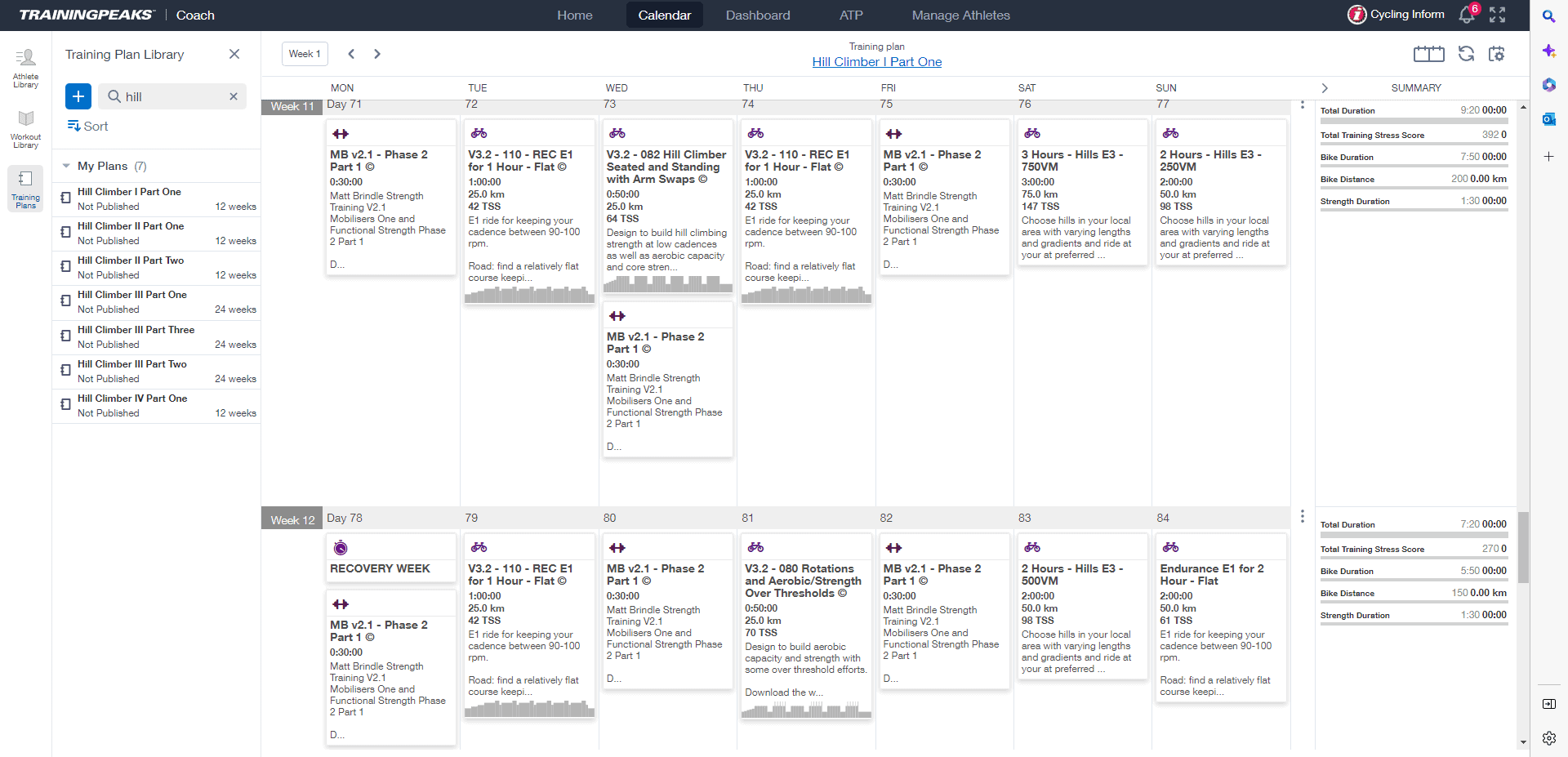
Here are the last two weeks of a custom training program. Like all of our customised training programs, I address your aerobic build, your strength build, and your speed build training phases at the correct cadences and zones to enable you to improve your hill climbing quickly. My custom training programs include specific cadence drills for hill climbing and instructional training videos to help you develop the correct pedalling technique and core strength for seated and standing on climbs. My custom training programs also include the relevant off-the-bike strength training sessions you can do at home that take just 15 minutes three times a week. They are designed to work in conjunction with our indoor training workouts to help you develop the core strength required to produce really good power across the top of the stroke (from the eleven o’clock to the one o’clock position) and through the bottom of the stroke (from the five o’clock to the seven o’clock position).
An example of our indoor training instructional training videos
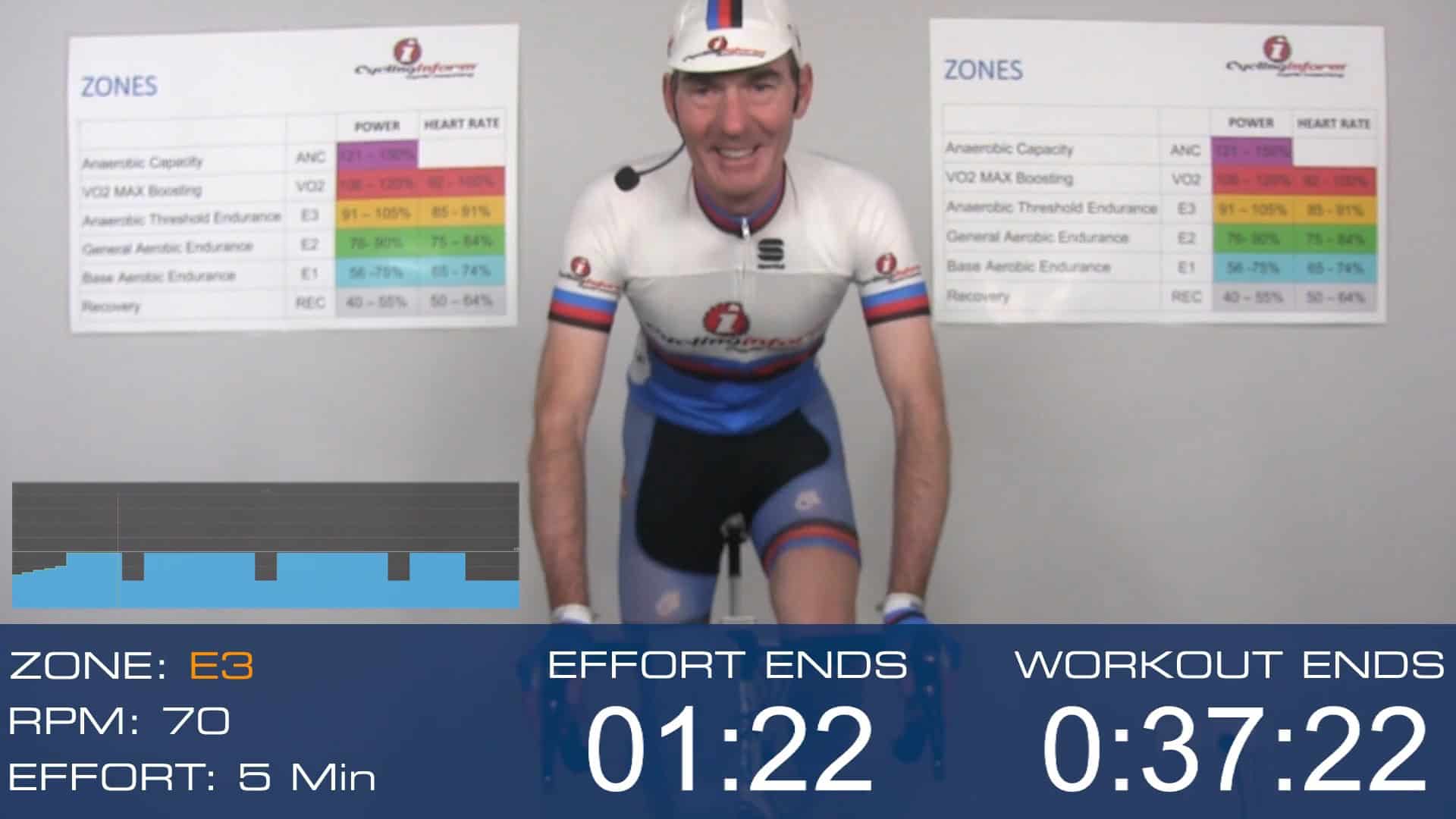
Exclusive to all our custom training programs are instructional training videos that run you through the training sessions and teach you how to develop good pedalling techniques and a strong core for seated and standing on climbs. These videos can be run alongside your training platform if you have a smart trainer or used standalone if you have a basic trainer.
An example of off-the-bike strength training for cyclists
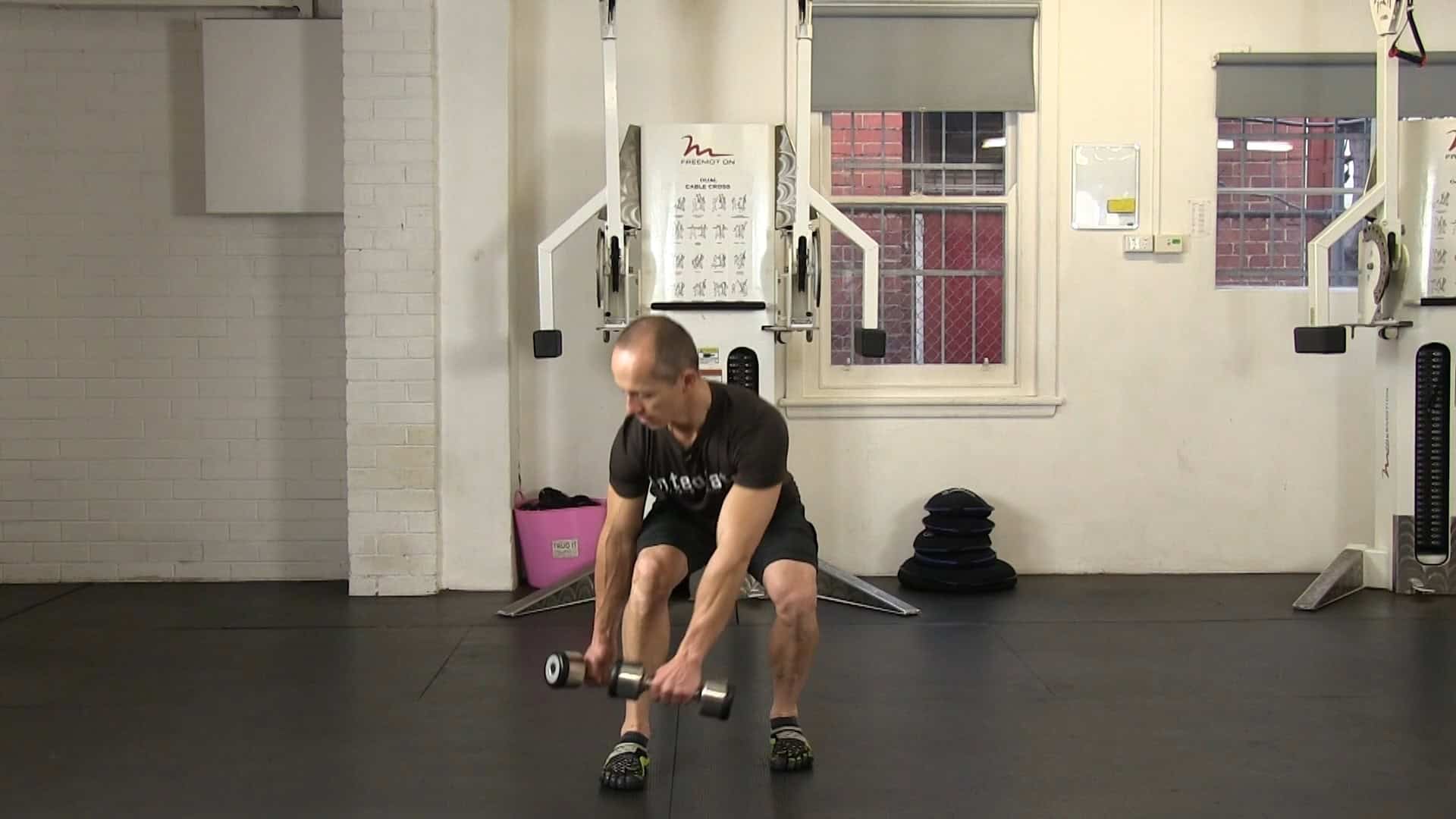
These powerful but simple to-do core strength and conditioning workouts are the foundation of all our training programs and remove the uncertainty of figuring out what off-the-bike strength training you should be doing. You don’t need costly gym equipment, a gym membership, or a personal trainer. You can perform all of these exercises in the comfort of your own house. A total of 15 minutes, three times a week, is all you need to get a stronger cycling core.
My custom training programs are compatible with all major training platforms, including Zwift, TrainerRoad, and Rouvy. You can train with heart rate or power; it’s your choice. They also include a stretching program to help you with post-ride body maintenance and rebalance your body. To see if a custom training program is a good fit for you, you can book a call to discuss your training goals with me.
By following these seven tips and training sessions, you will be well on your way to cycling up hills faster and leaving your rivals in the dust. With the right approach, you can quickly become an expert hill climber. So, get ready to unlock the secrets of hill climbing and start dropping more riders on climbs.
Where To From Here
If you want a customised training program created exclusively to help you build, taper and peak for your events and fit around your family and work commitments, check out our custom training program service here.
Check out the results we have been getting for our clients here.

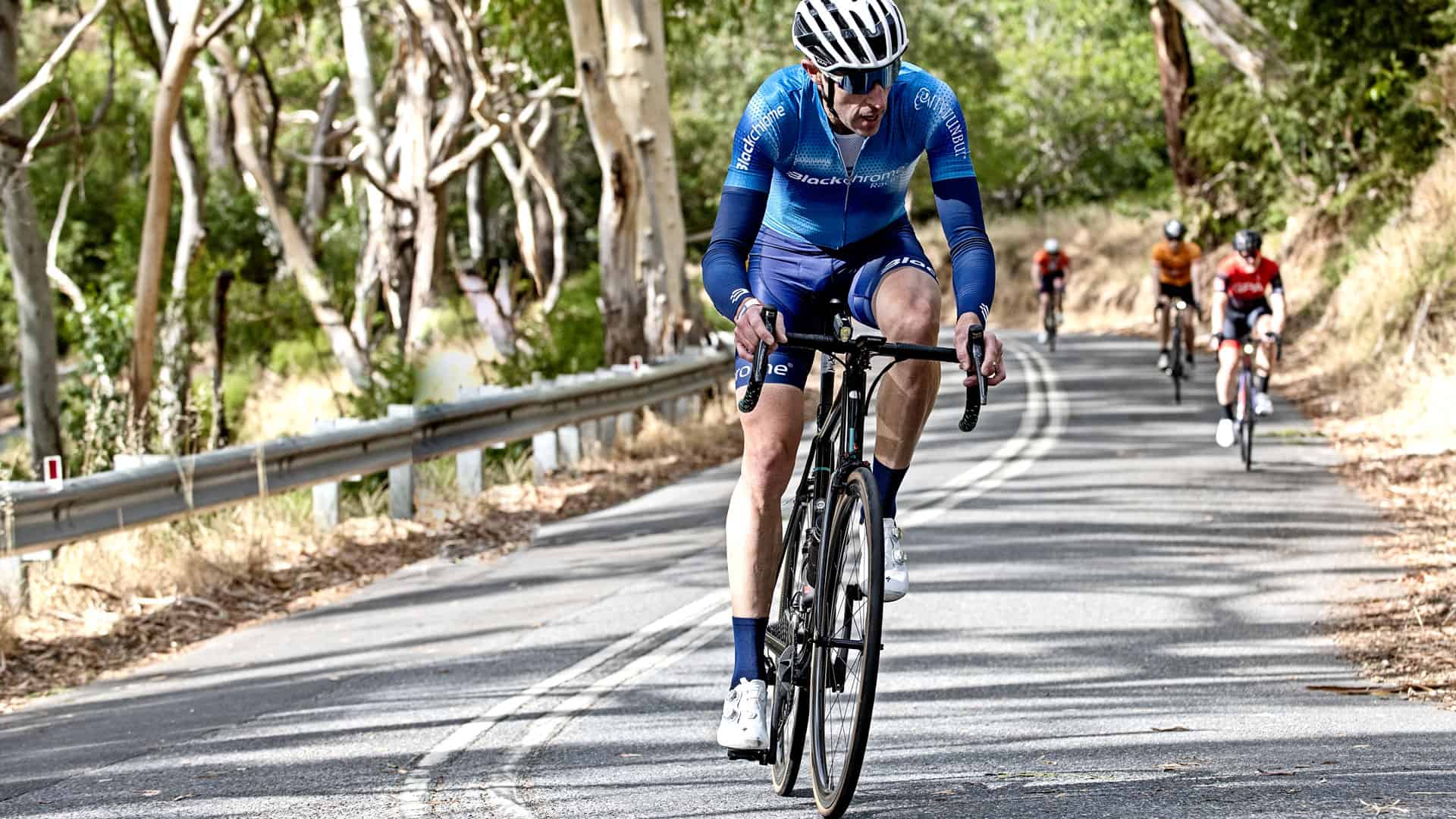




Leave A Comment